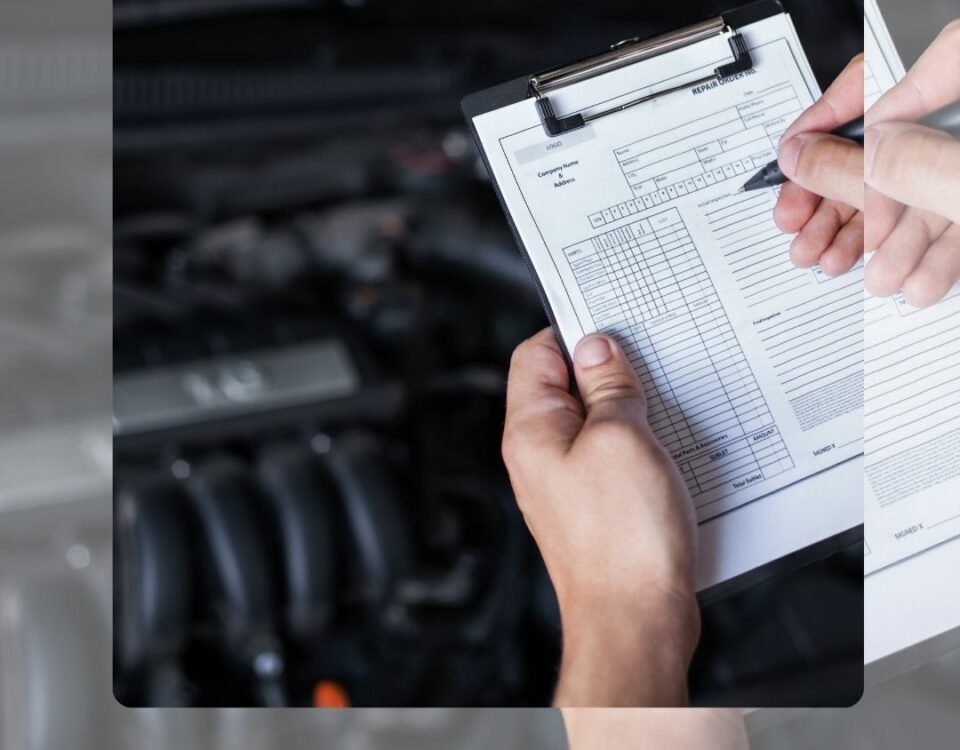
What Is And What Is Included In A Vehicle Inspection?
March 15, 2023
The Importance Of Vehicle Inspections
March 16, 2023By completing a thorough inspection, you can help increase your car’s performance and life span. You’ll be able to tell what needs to be fixed immediately and what can wait. A complete vehicle inspection should include the following:
- Wiper blades: The technician will examine the blades for any signs of damage, as well as whether the wiper arm is applying enough pressure to keep the blade against the windshield.
- Lights: The technician will check to see if your headlights, brake lights, license plate lights, parking lights, and hazard lights are all functioning properly.
- Air Filter: They will take a look at your air filter and see if any dirt or debris is trapped inside. If the filter appears to be missing or too dirty to work, then it probably needs replacement. Regardless of what we find, we will let you know our thoughts and next steps.
- Windshield Washer Fluid: A technician will inspect your wiper fluid levels and refill them if needed. They will then confirm that the washer pump and hoses work properly.
- Motor Oil: Checking the oil level and consistency is key when determining if an oil change is needed. Many oils are dark when first used, so don’t be concerned with color. Instead, focus on the thickness, grittiness, or milkiness of the oil. These consistencies could mean it’s time for a change.
- Power Steering Fluid: The power steering fluid in your car makes it easier to turn the wheel. Without it, you would need some serious muscles! The technician will check the pump reservoir for any sign of leakage and also inspect the hoses, gearbox, and/or rack and pinion assembly. If they notice that the fluid is grayish or blackish, this could mean that there are internal steering issues.
- Master cylinder fluid: The master cylinder is a part of your braking system that, in simple terms, functions as a pump to send brake fluid where it needs to go. This allows you to stop when desired. To check for any issues, a technician inspects the master cylinder for leaks and damage–such as foamy or discolored fluid which could be indicative of contamination elsewhere in the brake system.
- Brake Fluid: The technician will check the level of your brake fluid and, if too low, will replace it according to the manufacturer’s guidelines. They may also take the car out for a test drive.
- Transmission Fluid: Transmission fluid acts as both a lubricant and temperature regulator inside the engine. The technician will follow your manufacturer’s guidelines for checking the transmission fluid level and may suggest replacing the fluid if it’s brown or smells burnt.
- Coolant: A technician will inspect your coolant fluid level to maintain it and prevent your engine from overheating. A level of 1.5″ below the radiator filler neck is acceptable if the engine is warm. The tubes should not be exposed if the engine is cold.
- Battery: When a technician pops the hood, he or she will inspect the battery and its immediate vicinity for dirt/contaminants on the battery case, corrosion on the battery terminals, cables, or tray, a leaking or swollen battery case, and loose or melted battery posts.
- Steering and Suspension: Let your technician know if something has felt “off” when you drive. They should check: U-joints, Ball joints, Shocks, and struts.
- Tires: Since your tires are the only things in contact with the road, they are crucial to your car. They should check for Tire pressure, tread depth, condition, and alignment.
- Brakes: Brake pads, brake calipers, brake rotors.
As you can see you can make the roads safer for everyone by driving safely and regularly maintaining your vehicle. So, don’t wait any longer! And bring in your vehicle for its regular inspection, it will not only bring you peace of mind but it will also benefit your pocket!





